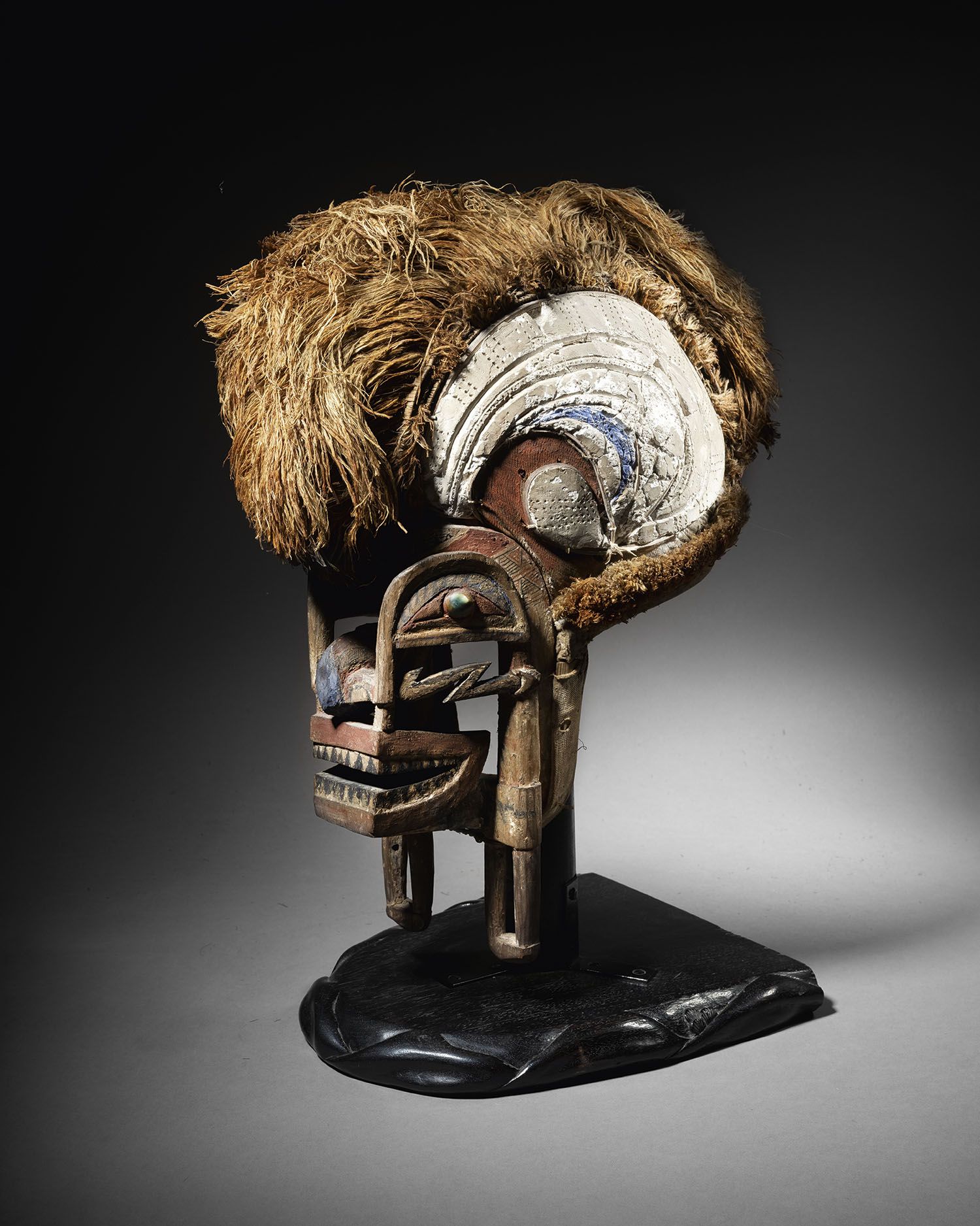Description
Tatanua mask, New Ireland Wood, feathers, shell opercules (Turbo petholatus), lime, red ochre, blue pigment, vegetable fibres, textile H. 51 cm Tatanua mask, New Ireland H. 10 1/16 in Provenance : - Collection André Breton, et Paul Eluard, Drouot, Paris, July 2, 1931, lot 104 reproduced on plate VI - Collection Georges Sadoul, Loudmer, Drouot Montaigne, Paris, June 20, 1996, lot 9. One can easily imagine the fascination that this mask may have exerted on Paul Eluard and André Breton nearly 100 years ago, by the aesthetic force that emanates from it. Important Tatanua helmet mask from New Ireland, it is characterized by the central element formed by a crest of fibers, a layer of lime on either side of the headdress, a large jaw composed of imposing teeth, and an asymmetrical and curvilinear motif painted in color on the face carved in full and in hollow. Appearing during the closing dances of the malagan, tatanua masks reflect the neo-Irish standards of beauty and virility. The malagan ceremonies were accompanied by music, songs, gestures and dances forming a total work of art. The ceremonies were lavish and served to stimulate economic activity and to reestablish social relations. For example, the sponsors had the right to reproduce the symbols used on the sculptures. Large supplies of food were prepared for the occasion and places were built to display the ritual objects. This object was pampered, as evidenced by its surprising base, an unusual reuse. As unexpected as a Dada poem; not everyone is crazy.
72
Tatanua mask, New Ireland Wood, feathers, shell opercules (Turbo petholatus), lime, red ochre, blue pigment, vegetable fibres, textile H. 51 cm Tatanua mask, New Ireland H. 10 1/16 in Provenance : - Collection André Breton, et Paul Eluard, Drouot, Paris, July 2, 1931, lot 104 reproduced on plate VI - Collection Georges Sadoul, Loudmer, Drouot Montaigne, Paris, June 20, 1996, lot 9. One can easily imagine the fascination that this mask may have exerted on Paul Eluard and André Breton nearly 100 years ago, by the aesthetic force that emanates from it. Important Tatanua helmet mask from New Ireland, it is characterized by the central element formed by a crest of fibers, a layer of lime on either side of the headdress, a large jaw composed of imposing teeth, and an asymmetrical and curvilinear motif painted in color on the face carved in full and in hollow. Appearing during the closing dances of the malagan, tatanua masks reflect the neo-Irish standards of beauty and virility. The malagan ceremonies were accompanied by music, songs, gestures and dances forming a total work of art. The ceremonies were lavish and served to stimulate economic activity and to reestablish social relations. For example, the sponsors had the right to reproduce the symbols used on the sculptures. Large supplies of food were prepared for the occasion and places were built to display the ritual objects. This object was pampered, as evidenced by its surprising base, an unusual reuse. As unexpected as a Dada poem; not everyone is crazy.
You may also like
